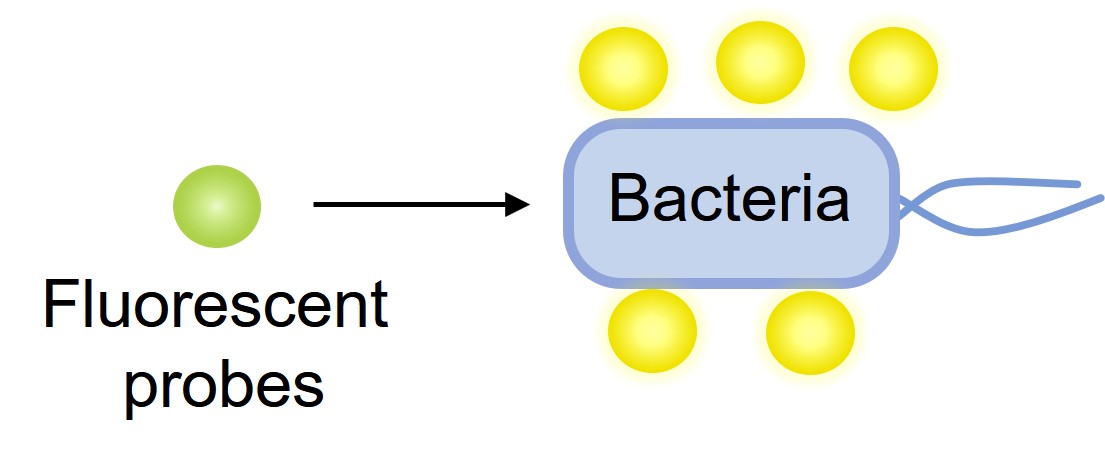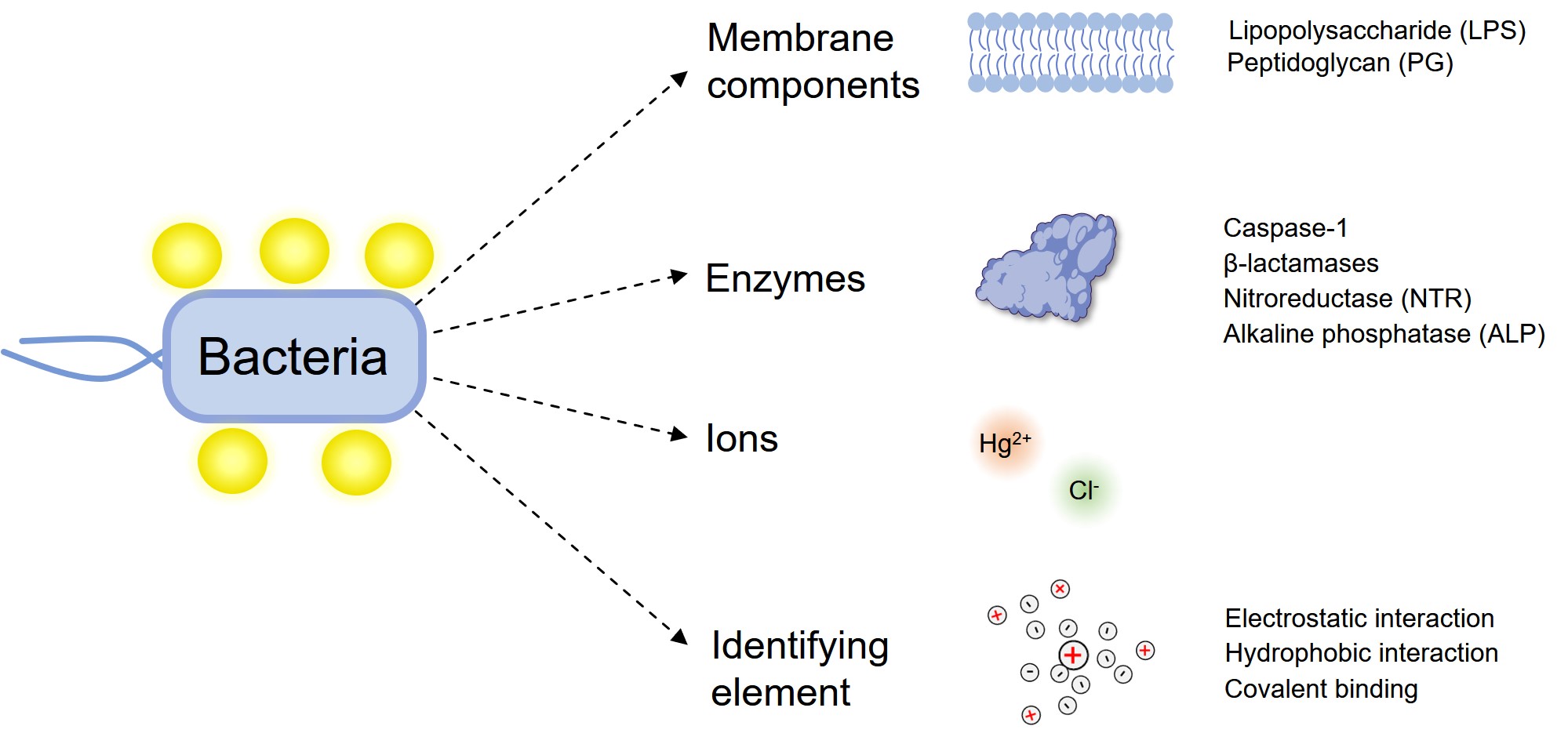Bacteria Fluorescent Label Service
As bacterial safety attracts more and more attention, fluorescent biosensors have received more extensive development and research due to their range of advantages. As a leading company in biotechnology, Creative Biolabs uses different approaches to label various types of bacteria and provides stable and reliable results to customers all over the world.
Fluorescent Label of Bacteria
In general, traditional optical bacterial detection methods can only be distinguished by shape, size and staining characteristics, while immunological methods can provide specific types of bacteria, but the process is often complicated and time-consuming. In recent years, due to the advantages of non-contact detection, simple operation, time interruption, and high sensitivity, fluorescent biosensing methods have received extensive attention. Fluorescent materials such as fluorescein, quantum dots, and fluorescent microspheres are used to label and identify specific bacteria. Labeled bacteria can be scanned directly by an inverted fluorescence microscope and fluorescent images can be collected, then various algorithms can be used to quantitatively or qualitatively analyze the target bacteria.
 Fig.1 Fluorescent probes for real-time tracking of bacteria.
Fig.1 Fluorescent probes for real-time tracking of bacteria.
Bacteria Fluorescent Label Methods
For different types of bacteria, different fluorescent marker-bacteria binding methods have been developed. These methods can be combined in complex environmental, food, or biological samples to identify or enrich target bacteria. Nitrifying bacteria and alkoxylating bacteria can be labeled by fluorescence or biotin through the addition reaction with highly specific alkyne-azide via bifunctional enzyme probes. Through plasmid construction and the introduction of green fluorescent protein (GFP), the expression of GFP can be promoted via the CAMP promoter, and efficient fluorescent labeling can be generated in Gram-positive pathogens. For example, stable labeling of Salmonella typhimurium can be achieved by incubating S. typhimurium with single-stranded DNA biotin-labeled aptamer, which can be coupled with streptavidin-modified silica fluorescent nanoprobe. In addition to this, conjugation methods such as chemical click, methionine derivatives, azides and magnetic nanobeads are also commonly used to label, identify and even manipulate bacteria.
 Fig.2 Bacterial identification strategies using fluorescent probes.
Fig.2 Bacterial identification strategies using fluorescent probes.
Our Services
The conjugation of fluorescent particles to bacteria can make up for the weakness of traditional bacterial detection methods and provide qualitative or quantitative information about the detected strains, which is crucial for pathogen detection and clinical diagnosis. Creative Biolabs provides suitable bacterial fluorescent labeling services according to different experimental plans and purposes, as well as stable and reliable result feedback. In addition, We also offer various fluorescent reagents, conjugation reagents or strains individually to fulfill your needs. Please feel free to contact us for more information.
Recommended products
